Εμφάνιση αναρτήσεων με ετικέτα ΙΣΤΟΡΙΚΟΣ ΑΝΑΘΕΩΡΗΤΙΣΜΟΣ. Εμφάνιση όλων των αναρτήσεων
Εμφάνιση αναρτήσεων με ετικέτα ΙΣΤΟΡΙΚΟΣ ΑΝΑΘΕΩΡΗΤΙΣΜΟΣ. Εμφάνιση όλων των αναρτήσεων
ΑΠΟΚΛΕΙΣΤΙΚΟ: Το βιβλίο που ξεσκέπασε τον μύθο του ολοκαυτώματος «Άουσβιτζ: η προσωπική αφήγηση ενός αυτόπτη μάρτυρα» Manfred Roeder - Thies Christophersen σε μορφή αρχείου .pdf (έκδοση και μετάφραση του Άρη Αρίωνος) - διαδικτυακή αρχειοθέτηση -
ΑΠΟΚΛΕΙΣΤΙΚΟ: Το βιβλίο που ξεσκέπασε τον μύθο του
ολοκαυτώματος «Άουσβιτζ: η προσωπική αφήγηση ενός αυτόπτη μάρτυρα» Manfred Roeder - Thies Christophersen σε μορφή αρχείου .pdf (έκδοση
και μετάφραση του Άρη Αρίωνος) - διαδικτυακή αρχειοθέτηση -
Το λεγόμενο «ολοκαύτωμα» αποτελεί την επικοινωνιακή ναυαρχίδα
της Ισραηλινής εξωτερικής πολιτικής από την εποχή της λήξης του Δευτέρου
Μεγάλου Πολέμου μέχρι και σήμερα. Σε αρκετές χώρες η δημόσια διαφωνία για τον
αριθμό των νεκρών ή διάφορες άλλες πλευρές του μύθου τιμωρείται με πολυετείς φυλακίσεις
και χρηματικά πρόστιμα καθώς και με δημόσια διαπόμπευση ή εκδίωξη από την
εργασία, ενώ σε πολλές περιπτώσεις τον ρόλο της άμεσης καταστολής αναλαμβάνει η
γνωστή «antifa».
Παρά ταύτα υπάρχει σήμερα μεγάλος αριθμός ιστορικών και
τεχνικών που αμφισβητούν τις Σιωνιστικές θεωρίες για τους θαλάμους αερίων και
τα κρεματόρια, οι οποίες και παρουσιάζονται ως η μόνη και απόλυτη αλήθεια από
το σύστημα ενώ διδάσκονται στις βαθμίδες της σχολικής εκπαίδευσης χωρών της Ευρώπης αλλά και σε ολόκληρο τον κόσμο. Προσφάτως ακόμη και
γνωστοί «ταγοί» της ελληνόφωνης αντιφασιστικής ακροδεξιάς δήλωσαν υπερασπιστές και
τιμητές του ολοκαυτώματος γεγονός που δεν μας προκαλεί έκπληξη, αφού η αποδοχή στους
κόλπους του συστήματος και όταν αυτή έχει να κάνει μάλιστα με την κοινοβουλευτική
παρουσία προϋποθέτει την δημόσια και πλήρη παραδοχή της Σιωνιστικής μυθολογίας.
Η πρόσφατη υποταγή της δημοτικής αρχής της Καβάλας σε σχέση με το Σιωνιστικό μνημείο αλλά και πολλές άλλες κινήσεις των Ισραηλινών τα
τελευταία χρόνια αποδεικνύουν στην πράξη την χειραγώγηση της ελληνικής κοινής
γνώμης και την δυναμική του Σιωνιστικού παράγοντα στην χώρα μας αλλά και σε
ολόκληρη την Ευρώπη.
Το παρακάτω βιβλίο έχει μεταφραστεί από τον συναγωνιστή
Άρη Αρίων ο οποίος προκάλεσε - στο παρελθόν αλλά και πρόσφατα - ιδιαίτερη αίσθηση, τόσο με τις εξαιρετικές συνεντεύξεις
του στο Altermedia
Hellas (διαβάστε
εδώ και εδώ) - οι οποίες θάφτηκαν από όλους - όσο και με το πρόσφατο άρθρο του σχετικά
με την οικονομία και το τοκογλυφικό σύστημα (το άρθρο εδώ).
Η παρθενική έκδοση του
βιβλίου που έχετε την ευκαιρία να διαβάσετε σήμερα πραγματοποιήθηκε τον Μάρτιο
του 1973 στην Δυτική Γερμανία και ήταν η πρώτη
μεταπολεμική έκδοση («Die Auschwitz Luge») που προσπάθησε να τσακίσει το
τείχος του ψεύδους. Γνώρισε πολλαπλές εκδόσεις με μεγάλη επιτυχία, έχει
πουλήσει περισσότερα από 150.000 αντίτυπα σε ολόκληρο τον κόσμο και θεωρείται το
best seller σχετικά
με τον Ιστορικό Αναθεωρητισμό. Προκάλεσε ιδιαίτερες αντιδράσεις στους κύκλους της
κυβέρνησης μαριονέτας και απαγορεύτηκε από την νομοθεσία της Γερμανίας.
Προτεινόμενος ιστότοπος: ihr.org και revisionists.com
Ο Άρης Αρίων προχώρησε στην ελληνική έκδοση στις 8.8.1988
μετά από άδεια του εκδότη Manfred
Roeder καθώς
και με την προτροπή του Alexi
Erlanger
(υπαρχηγός
του Γερμανικού Απελευθερωτικού Κινήματος) του οποίου το βιβλίο «Αδόλφος Χίτλερ ο
ηγέτης» θα προβληθεί σε μελλοντική ανάρτηση. Να σημειωθεί ότι και αυτό το
εξαιρετικά σπάνιο βιβλίο έχει μεταφραστεί και εκδοθεί από τον συμπατριώτη μας Άρη
Αρίων το 1991. Η συντακτική ομάδα του «Μαύρου Κρίνου» θέλει να ευχαριστήσει
δημοσίως τον συναγωνιστή για την άδεια του να προχωρήσουμε σε αυτή την δημόσια
προβολή του εν λόγω έργου, το οποίο είναι όχι απλά δυσεύρετο αλλά κυριολεκτικά εξαφανισμένο
και απίθανο να βρεθεί σε παλαιοπωλεία ή σε βιβλιοπωλεία.
Η σημερινή ανάρτηση
είναι η καλύτερη απάντηση σε όλους αυτούς που αμφισβήτησαν τόσο την ύπαρξη του
συναγωνιστή μας (!) όσο και την πολυετή προσφορά του στον Ελληνικό Εθνικοσοσιαλισμό
(…) αλλά ακόμη και την έκδοση των 2 αυτών βιβλίων … Ο Άρης Αρίων διατηρούσε προσωπική φιλία και επαφή με
τον Manfred
Roeder μέχρι
και τον θάνατο του, ενώ στο παρελθόν ήταν αυτός που εξασφάλισε μια αποκλειστική
συνέντευξη του για το περιοδικό «Αντίδοτο».
Ο Manfred
Roeder γεννήθηκε
την 6η Φεβρουαρίου του 1929 και απεβίωσε την 30η Ιουλίου
του 2014. Εργάστηκε ως δικηγόρος ενώ είχε στρατευτεί στις τάξεις της Wehrmacht κατά
την διάρκεια του πολέμου. Έλαβε μέρος στην μάχη του Βερολίνου και υπήρξε μεταπολεμικά
οργανωτής και ακτιβιστής στο κίνημα της χώρας του. Διώχθηκε και φυλακίστηκε για
την πολύπλευρη δράση του από την Δημοκρατική Σιωνιστική κυβέρνηση της Γερμανίας.
O
Thies Christophersen γεννήθηκε
την 27η Ιανουαρίου του 1918 και απεβίωσε την 13η
Φεβρουαρίου του 1997. Υπηρέτησε ως στρατιώτης στον Γερμανικό στρατό, ασχολήθηκε
επαγγελματικά με την αγροτική ανάπτυξη ενώ ενίσχυσε τις δυνάμεις του Ιστορικού
Αναθεωρητισμού. Διατήρησε επαφές με κορυφαία στελέχη του Εθνικοσοσιαλισμού στην
μεταπολεμική περίοδο, και υπερασπίστηκε τον Ernst Zündel
κατά την διάρκεια των δικαστικών διώξεων. Αντιμετώπισε την εκδικητικότητα της κρατικής
αρχής λόγω των απόψεων του.
για να κατεβάσετε το βιβλίο στον σύνδεσμο εδώ ...
ΓΕΡΜΑΝΙΑ: Εισβολή της αστυνομίας σε σπίτι 86χρονης που αρνήθηκε δημόσια τον επίσημο αριθμό των νεκρών του Ολοκαυτώματος.
Μια 86χρονη Γερμανίδα, η Ursula Haverbeck, είναι αντιμέτωπη
με την κατηγορία του εγκλήματος της «ρητορικής μίσους», επειδή συζήτησε δημόσια
στην τηλεόραση για το πόσοι Εβραίοι πέθαναν τελικά, στο Ολοκαύτωμα. Η συζήτηση
προβλήθηκε από τη γερμανική δημόσια τηλεόραση και μεταδόθηκε σε όλη την Ευρώπη.
Ήταν η πρώτη φορά που κάποιος είχε τη δυνατότητα να αμφισβητήσει τον επίσημο
αριθμό των νεκρών του Ολοκαυτώματος στη γερμανική τηλεόραση.
Η αστυνομία εισέβαλε και έκανε άνω κάτω το σπίτι της γηραιάς
Γερμανίδας, καθώς και τα σπίτια τριών υποστηρικτών της. H εισαγγελία απήγγειλε
ήδη τις κατηγορίες. Εάν κριθεί ένοχη θα καταδικαστεί σε πέντε χρόνια φυλάκιση.
Η Ursula Haverbeck συζήτησε για την ύπαρξη δολοφονικών
θαλάμων αερίων και για τα έξι εκατομμύρια νεκρούς του Ολοκαυτώματος στον
γερμανικό τηλεοπτικό σταθμό Das Erste, το κύριο δημόσιο τηλεοπτικό κανάλι στη
Γερμανία. Πιστεύεται ότι είναι η πρώτη φορά που το Ολοκαύτωμα συζητιέται σε
γερμανικό τηλεοπτικό σταθμό. Η συνέντευξη αναρτήθηκε στην ιστοσελίδα του Das
Erste, την οποία η Alexa κατατάσσει ως την 208η πιο δημοφιλή ιστοσελίδα στη
Γερμανία. Το Das Erste μεταδίδεται σε όλη την Ευρώπη δωρεάν.
για περισσότερα στον σύνδεσμο εδώ ...
How the British Obtained The Confessions Of Rudolf Höss (25.11.1901 - 16.04.1947) By Dr. Robert Faurisson The Journal for Historical Review Winter 1986 Volume 7 page 389
Rudolf Höss was the first of three successive commandants of the Auschwitz
concentration camp. He is often called "the Commandant of Auschwitz,"
and the general public knows of him from a book published under the title
Commandant in Auschwitz.
He appeared before the International Military Tribunal as a witness on 15
April 1946, where his deposition caused a sensation. To the amazement of the
defendants and in the presence of journalists from around the world, he
confessed to the most frightful crimes that history had ever known. He said
that he had personally received an order from Himmler to exterminate the Jews.
He estimated that at Auschwitz 3,000,000 people had been exterminated,
2,500,000 of them by means of gas chambers. His confessions were false. They
had been extorted from Höss by torture, but it took until 1983 to learn the
identity of the torturers and the nature of the tortures they inflicted upon
him.
The confessions of Rudolf Höss supply the keystone to the theory which
maintains that systematic extermination of the Jews, especially by means of
homicidal gas chambers, was a historical reality.
These confessions consist essentially of four documents which, in
chronological order, are the following:
etc etc etc
The war ended in Germany on 8 May 1945. Höss fell into the hands of the
British, who imprisoned him in a camp for SS men. As a trained agronomist, he
obtained an early release. His guards were unaware of the importance of their
prey. A work office found him employment as an agricultural work at a farm near
Flensburg, not far from the Danish border. He remained there for eight months.
The military police looked for him. His family, with whom he succeeded in
making contact, was closely watched and subjected to frequent searches.
Revelations in 1983 About the British Torturers of Rudolf Höss
The Revisionists proved a long time ago that the various confessions of
Rudolf Höss contained so many gross errors, nonsensical elements, and
impossibilities of all kinds, that it is no longer possible to believe them, as
did the judges at Nuremberg and Cracow, as well as certain self styled
historians, without any prior analysis of their content and of the
circumstances in which they were obtained.
In all likelihood, Höss was tortured by the British soldiers of the 92nd
Field Security Section, but a confirmation of that hypothesis was necessary.
Confirmation has come with the publication in England of a book containing the
name of the principal torturer (a British sergeant of Jewish origin) and a
description of the circumstances of Höss' arrest, as well as his third-degree
interrogation.
The book is by Rupert Butler. It was published in 1983 (Hamlyn Paperbacks).
Butler is the author of three other works: The Black Angels, Hand of Steel and
Gestapo, all published by Hamlyn. The book that interests us is entitled
Legions of Death. Its inspiration is anti-Nazi. Butler says that he researched
this book at the Imperial War Museum in London, the Institute for Contemporary
History and Wiener Library, and other such prestigious institutions. At the
beginning of his book, he expresses his gratitude to these institutions and,
among others, to two persons, one of whom is Bernard Clarke ("who captured
Auschwitz Commandant Rudolf Höss"). The author quotes several fragments of
what are either written or recorded statements by Clarke.
Bernard Clarke shows no remorse. On the contrary, he exhibits a certain
pride in having tortured a "Nazi." Rupert Butler, likewise, finds
nothing to criticize in that. Neither of them understands the importance of
their revelations. They say that Höss was arrested on 11 March, 1946, and that
it took three days of torture to obtain "a coherent statement." They
do not realize that the alleged "coherent statement" is nothing other
than the lunatic confession, signed by their quivering victim on the l4th or
l5th of March 1946, at 2:30 in the morning, which was to seal Höss' fate
definitely, a confession which would also give definitive shape to the myth.
The confession would also shape decisively the myth of Auschwitz, the supposed
high-point of the extermination of the Jews, above all due to the alleged use
of homicidal gas chambers.
On 11 March 1946, a Captain Cross, Bernard Clarke and four other
intelligence specialists in British uniforms, most of them tall and menacing,
entered the home of Frau Höss and her children.
The six men, we are told, were all "practised in the more sophisticated
techniques of sustained and merciless investigation" (p. 235). Clarke
began to shout:
If you don't tell us [where your husband is] we'll turn you over to the
Russians and they'll put you before a firing-squad. Your son will go to
Siberia.Frau Höss broke down and revealed, says Clarke, the location of the
farm where her husband was in hiding, as well as his assumed name: Franz Lang.
And Bernard Clarke added:
Suitable intimidation of the son and daughter produced precisely identical
information.The Jewish sergeant and the five other specialists in third degree
interrogation then left to seek out Höss, whom they surprised in the middle of
the night, sleeping in an alcove of the room used to slaughter cattle on the
farm.
Höss screamed in terror at the mere sight of British uniforms.Clarke yelled
"What is your name?"With each answer of "Franz Lang,"
Clarke's hand crashed into the face of his prisoner. The fourth time that
happened, Höss broke and admitted who he was.The admission suddenly unleashed
the loathing of the Jewish sergeants in the arresting party whose parents had
died in Auschwitz following an order signed by Höss.The prisoner was torn from
the top bunk, the pyjamas ripped from his body. He was then dragged naked to
one of the slaughter tables, where it seemed to Clarke the blows and screams
were endless.Eventually, the Medical Officer urged the Captain: "Call them
off, unless you want to take back a corpse."A blanket was thrown over Höss
and he was dragged to Clarke's car, where the sergeant poured a substantial
slug of whisky down his throat. Then Höss tried to sleep.Clarke thrust his
service stick under the man's eyelids and ordered in German: "Keep your
pig eyes open, you swine."For the first time Höss trotted out his oft-repeated
justification: "I took my orders from Himmler. I am a soldier in the same
way as you are a soldier and we had to obey orders."The party arrived back
at Heide around three in the morning. The snow was swirling still, but the
blanket was torn from Höss and he was made to walk completely nude through the
prison yard to his cell. (p. 237)So it is that Bernard reveals "It took
three days to get a coherent statement out of [Höss]" (ibid.). This
admission was corroborated by Mr. Ken Jones in an article in the Wrexham Leader.
(October 17,1986):
Mr. Ken Jones was then a private with the fifth Royal Horse Artillery
stationed at Heid[e) in Schleswig-Holstein. "They brought him to us when
he refused to cooperate over questioning about his activities during the war.
He came in the winter of 1945/6 and was put in a small jail cell in the
barracks," recalls Mr. Jones. Two other soldiers were detailed with Mr.
Jones to join Höss in his cell to help break him down for interrogation.
"We sat in the cell with him, night and day, armed with axe handles. Our
job was to prod him every time he fell asleep to help break down his
resistance," said Mr. Jones. When Höss was taken out for exercise he was
made to wear only jeans and a thin cotton shirt in the bitter cold. After three
days and nights without sleep, Höss finally broke down and made a full
confession to the authorities.Clarke's statement, obtained under the conditions
just described by bullies of British Military Security under the brutal
inspiration of sergeant-interpreter Bernard Clarke, became Höss's first
confession, the original confession indexed under the number NO-1210. Once the
tortured prisoner had begun to talk, according to Clarke, it was impossible to
stop him. Clarke, no more conscious in 1982 or 1983 than in 1946 of the
enormity of what he forced Höss to confess, goes on to describe a series of
fictitious horrors presented here as the truth: Höss went on to tell how after
the bodies had been ignited, the fat oozing from them was poured over the other
bodies (!). He estimated the number of dead during just the period when he was
at Auschwitz at two million (!); the killings reached 10,000 victims per day
(!).
It was Clarke's duty to censor the letters sent by Höss to his wife and
children. Every policeman knows that the power to grant or withhold permission
to a prisoner to write to his family constitutes a psychological weapon. To
make a prisoner "sing" it is sometimes sufficient to merely suspend
or cancel that authorization. Clarke makes an interesting remark about the
content of Höss's letters; he confides to us:
Sometimes a lump came to my throat. There were two different men in that
one man. One was brutal with no regard for human life. The other was soft and
affectionate. (p. 238)Rupert Butler ends his narrative by saying that Höss
sought neither to deny nor to escape his responsibilities. In effect, at the
Nuremberg tribunal Höss conducted himself with a "schizoid apathy."
The expression is that of the American prison psychologist, G.M. Gilbert, who
was in charge of the psychological surveillance of the prisoners and whose
eavesdropping aided the American prosecution. We can certainly believe that
Höss was "split in two"! He had the appearance of a rag because they
had turned him into a rag.
"Apathetic", writes Gilbert on page 229 of his book;
"apathetic, he repeats on the following page; "schizoid apathy,"
he writes on page 239 (Nuremberg Diary, 1947, Signet Book, 1961).
At the end of his trial at Cracow; Höss greeted his death sentence with
apparent indifference, Rupert Butler comments as follows:
[Höss] reasoned that Allies had their orders and, that there could be
absolutely no question of these not being carried out. (ibid.)One could not say
it any better. It seems that Rudolf Höss, like thousands of accused Germans
turned over to the mercy of conquerors who were totally convinced of their own
goodness, had quickly grasped that he had no other choice but to suffer the
will of his judges, whether they came from the West or from the East.
Butler then quickly evokes the case of Hans Frank, the former Governor of
Poland. With the same tone of moral satisfaction he recounts the circumstances
of Frank's capture and subsequent treatment:
Celebrity status of any kind singularly failed to impress the two coloured
GIs who arrested him and made sure he was transported to the municipal prison
in Miesbach only after he had been savagely beaten up and flung into a lorry.A
tarpaulin had been thrown over him to hide the more obvious signs of
ill-treatment; Frank found the cover useful when he attempted to slash an
artery in his left arm.Clearly, no such easy way out could be permitted; a US
army medical officer saved his life and he stood trial at the International
Military Tribunial at Nuremberg. (p. 238-239)Rudolf Höss and Hans Frank were
not the only ones to undergo treatment of that kind. Among the most celebrated
cases, we know of Julius Streicher, Hans Fritzsche, Oswald Pohl, Franz Ziereis,
and Josef Kramer.
But the case of Rudolf Höss is by far the most serious in its consequences.
There is no document that proves that the Germans had a policy of exterminating
the Jews. Léon Poliakov agreed with this in 1951:
As regards the conception properly called of the plan for a total
extermination, the three or four principal actors committed suicide in May of
1945. No document has survived or perhaps has ever existed.(Bréviaire de la
haine: Le IIIe Reich et les Juifs, Calmann-Levy, 1951, Livre de Poche, 1974,
p.171 )In the absence of any document, historians à la Poliakov have repeatedly
returned, primarily, to doubtful confessions like those of Kurt Gerstein or
Rudolf Höss, sometimes modifying the texts to suit their convenience.
Bernard Clarke is "today a successful businessman working in the south
of England" (Legions of Death, 1983, p. 235). One can in fact say that it
is his voice that was heard at Nuremberg on 15 April 1946, when Assistant
Prosecutor Amen read, piece by piece, to an astonished and overwhelmed
audience, the supposed confession of Rudolf Höss. On that day was launched a
lie of world-wide dimensions: the lie of Auschwitz. At the origins of that
prodigious media event: several Jewish sergeants of British Military Security,
including Bernard Clarke, "today a successful businessman working in the
south of England."
The Testimony of Moritz von Schirmeister
During the war, Moritz von Schirmeister had been the personal press attaché
of Joseph Goebbels. On 29 June 1946, he was interrogated before the IMT as a
defense witness for Hans Fritzsche. His deposition was particularly interesting
regarding the actual personality of Dr. Goebbels and the attitude of the
official German news services toward the flood of atrocity stories about the
concentration camps spread during the war by the Allies.
At the end of the war, Moritz von Schirmeister had been arrested by the
British and interned in a camp in England, where he was given the task of
politically "re-educating" his fellow prisoners. Before testifying at
Nuremberg, he was transferred by plane from London to Germany. At first he was
kept at Minden-on-the-Weser, which was the principal interrogation center for
the British Military Police. From there he was taken by car (31 March -- 1
April 1946) to the prison at Nuremberg. In the same car rode Rudolf Höss.
Moritz von Schirmeister is precisely that "prisoner of war who had been
brought over from London as a witness in Fritzsche's defense about whom Höss
speaks in his "memoirs" (see above, p. 393).
Thanks to a document that I obtained from American researcher Mark Weber,
who gave me a copy of it in Washington in September of 1983 (a document whose
exact source I not yet authorized to indicate), we know that they were able to
talk freely in the car that took them to Nuremberg. In that document, slightly
more than two pages long, Schirmeister reports, as regarding the charges
hanging over Höss, that Höss confided to him:
Gewiss, ich habe unterschrieben, dass ich 2 Millionen Juden umgebracht
habe. Aber ich hätte genausogut untershrieben, dass es 5 Millionen Juden
gewesen sind. Es gibt eben Methoden, mit denen man jedes Geständnis erreichen
kann -- ob es nun wahr ist oder nicht."Certainly, I signed a statement
that I killed two and a half million Jews. But I could just as well have said
that it was five million Jews. There are certain methods by which any
confession can be obtained, whether it is true or not."
Another Confession Signed by Rudolf Höss
The British torturers of Rudolf Höss had no reason to exercise any
restraint. After making him sign document NO-1210 at 2:30 in the morning of the
l4th or l5th of March 1946, they obtained a new signature from him on March 16,
this time at the bottom of a text in English, written in an English handwriting
style, with a blank in the space where the name of the place ought to have been
given. His guards made him sign a simple note written in English:
Statement made voluntarily at ______ Gaol by Rudolf Höss, former Commandant
of Auschwitz Concentration Camp on l6th day of March 1946.I personally arranged
on orders received from Himmler in May 1941 the gassing of two million persons
between June/July 1941 and the end of 1943 during which time I was commandant
of Auschwitz.signed.
Rudolf Höss,
SS-Stubhr.
Eh. (?) Kdt. v. Auschwitz-Birkenau(even the word "signed" was
written in an English hand).The Auschwitz Myth
We have known for some time that the Auschwitz myth is of an exclusively
Jewish origin. Arthur R. Butz has related the facts in his book, The Hoax of
the Twentieth Century, as has Wilhelm Stäglich in The Auschwitz Myth. The
principal authors of the creation and the peddling of the "rumor of
Auschwitz" have been, successively, two Slovaks, Alfred Wetzler (or
Weczler) and Rudolf Vrba (or Rosenberg or Rosenthal); then a Hungarian, Rabbi
Michael Dov Ber Weissmandel (or Weissmandl); then, in Switzerland,
representatives of the World Jewish Congress like Gerhard Riegner, who were in
touch with London and Washington; and finally Americans like Harry Dexter
White, Henry Morgenthau Jr. and Rabbi Stephen Samuel Wise. Thus was born the
famous World Refugee Board Report on Auschwitz and Birkenau, published in
Washington in November 1944. Copies of this report were included in the files
of the judges advocate general in charge of prosecuting the Germans involved in
the Auschwitz camp. It constituted the official version of the story of the
alleged gassing of the Jews in that camp. Most probably it was used as a
reference work by the inquirers-interrogators-torturers of "the Commandant
of Auschwitz." All the names here mentioned are those of Jews.
Moreover we now see that Bernard Clarke, the first British torturer, was a
Jew, The second British torturer, Major Draper (?), may also have been a Jew.
The same for the two Americans: psychologist G.M. (Gustave Mahler) Gilbert and
Colonel Harlan Amen. Finally, in Poland, Höss was faced with Polish Jews who
treated him more or less the same way. When he wrote his "memoirs" it
was under the supervision of instructing magistrate Jan Sehn, who was also
probably a Jew.
Establishment historians dispute that Höss had been tortured and had
confessed under duress. Since the publication of Rupert Butler's book in 1983,
however, it is no longer possible for them to contest that. The Revisionists
were right.
Since 1985 it is even less possible. In January-March 1985, the trial of
Ernst Zündel, who was accused by a Jewish association and by the Crown of
spreading Revisionist literature, took place in Toronto (Canada). Rudolf Vrba
testified as a Crown witness. (He lives now in British Columbia). Affirmative
and self assured as long as he answered the questions of the Crown, he suffered
a spectacular rout when cross-examined by Ernst Zündel's lawyer, Doug Christie.
For the first time since 1945 a Jewish witness to the alleged gassings in
Auschwitz was asked to explain his affirmations and his figures. The result was
so terrible for R. Vrba that finally the Crown itself gave a kind of coup de
grace to its key witness. That unexpected event and some others (like the
leading specialist of the Holocaust, Raul Hilberg, being caught red-handed in
his lies) really made of the "Toronto Trial" the "Trial of the
Nuremberg Trial."
The unintentional revelations of Rupert Butler in 1983 and unexpected
revelations of the "Toronto Trial" in 1985 succeeded at last in
showing entirely and clearly how the Auschwitz myth was fabricated from 1944 to
1947, to be exact from April 1944, when Rudolf Vrba and Alfred Wetzler are supposed
to have escaped from Auschwitz to tell their story to the world up until April
1947, when Rudolf Höss was hanged after having supposedly told the same world
his own story about Auschwitz.
It is remarkable that from beginning to end that story comes from
essentially or perhaps even exclusively Jewish sources. Two Jewish liars (Vrba
and Wetzler) from Slovakia convinced or seemed to have convinced other Jews
from Hungary, Switzerland, United States, Great Britain, and Poland. This is
not a conspiracy or a plot; it is the story of the birth of a religious belief:
the myth of Auschwitz, center of the religion of the Holocaust.
The Journal for Historical Review
http://www.ihr.org/index.html
Winter 1986 Volume 7 page 389
Ενάντια στους μύθους της Ισραηλινής εξωτερικής πολιτικής!
του Λυκούργου
Το «ολοκαύτωμα» αποτελεί για τους εβραίους ένα
αναπόσταστο μέρος της ιστορίας τους, άρρηκτα συνδεδεμένο με τον ψυχισμό τους σε
τέτοιο βαθμό που του προσδίδει
μια ομολογουμένως θρησκευτική διάσταση.
Για τους μη εβραίους, το ζήτημα του «ολοκαυτώματος» μετατράπηκε σταδιακά (μέσω
του τύπου, της τηλεόρασης, του κινηματογράφου, του εκπαιδευτικού συστήματος) σε
ένα είδος θρησκευτικής λατρείας,
καθιστώντας το στη συνειδησή τους ως
συνώνυμο της εβραϊκής ιστορίας.
Έτσι, ακόμη και η παραμικρή κριτική σε κάποιον εβραίο είναι αρκετή ώστε να ξεσηκώσει θύελλα αντιδράσεων: Aν επικρίνεις έναν εβραίο είσαι «αντισημίτης». Ο Χίτλερ ήταν επίσης αντισημίτης και ήθελε να τους «εξοντώσει» στους θαλάμους αερίων. Οπότε, κάθε αρνητική κριτική απέναντι σε κάποιον εβραίο υποδαυλίζει αυτομάτως το μίσος και είναι ικανή να ... ανοίξει το δρόμο για «νέους θαλάμους αερίων».
Έτσι, ακόμη και η παραμικρή κριτική σε κάποιον εβραίο είναι αρκετή ώστε να ξεσηκώσει θύελλα αντιδράσεων: Aν επικρίνεις έναν εβραίο είσαι «αντισημίτης». Ο Χίτλερ ήταν επίσης αντισημίτης και ήθελε να τους «εξοντώσει» στους θαλάμους αερίων. Οπότε, κάθε αρνητική κριτική απέναντι σε κάποιον εβραίο υποδαυλίζει αυτομάτως το μίσος και είναι ικανή να ... ανοίξει το δρόμο για «νέους θαλάμους αερίων».
«... Για δεκαετίες αυτό το δωμάτιο στο στρατόπεδο Άουσβιτς 1
το έδειχναν σε δεκάδες χιλιάδες τουρίστες ως έναν χώρο εκτελέσεως με αέρια και
μάλιστα στην αρχική του μορφή. Τον Ιανουάριο του '95 η εξέχουσα εβδομαδιαία
Γαλλική εφημερίδα L' Express παραδέχτηκε ότι τα πάντα ήταν λάθος για αυτόν τον
θάλαμο αερίων αφού υπήρξε μια κατασκευή που φτιάχτηκε πριν το πόλεμο ...»
Παρότι τέτοιου είδους αντιδράσεις είναι ξεπερασμένες
και φανερώνουν ξεκάθαρα
έλλειψη στοιχειώδους επιχειρηματολογίας και αδυναμίας διεξαγωγής γόνιμου
διαλόγου, δεν παύουν ωστόσο να παραμένουν ιδιαίτερα αποτελεσματικές στις
ευρύτερες μάζες. Αυτό ακριβώς είναι που
καθιστά τον αγώνα της ιστορικής αναθεώρησης εξαιρετικά δύσκολο: όχι μόνο πρέπει να παλέψουμε ενάντια στη
λογοκρισία των μέσων μαζικής εξαπάτησης,
στη καταστολή και την εχθρική προπαγάνδα αλλά πρέπει επίσης να ξεπεράσουμε ένα είδος θρησκευτικής πίστης.
Η συντριβή της θρησκείας του «ολοκαυτώματος» είναι επιβεβλημένη. Είναι όμως εφικτό κάτι τέτοιο; Η ιστορία μας δείχνει ότι το να αντικρούσεις μια θρησκεία με λογικά επιχειρήματα δεν είναι ακριβώς ένα εύκολο έργο. Είναι όμως μια μάχη που έχουμε καθήκον να δώσουμε και , επειδή η μοίρα των μελλοντικών γενεών εξαρτάται απο την εκβασή της, πρέπει να τη κερδίσουμε! Ο μύθος του «ολοκαυτώματος» έχει δηλητηριάσει τις συνειδήσεις των Ευρωπαϊκών Λαών δημιουργώντας μας ένα αίσθημα ενοχής που απειλεί να καταστρέψει τον αυτοσεβασμό μας και τη θελησή μας για επιβίωση.
Η συντριβή της θρησκείας του «ολοκαυτώματος» είναι επιβεβλημένη. Είναι όμως εφικτό κάτι τέτοιο; Η ιστορία μας δείχνει ότι το να αντικρούσεις μια θρησκεία με λογικά επιχειρήματα δεν είναι ακριβώς ένα εύκολο έργο. Είναι όμως μια μάχη που έχουμε καθήκον να δώσουμε και , επειδή η μοίρα των μελλοντικών γενεών εξαρτάται απο την εκβασή της, πρέπει να τη κερδίσουμε! Ο μύθος του «ολοκαυτώματος» έχει δηλητηριάσει τις συνειδήσεις των Ευρωπαϊκών Λαών δημιουργώντας μας ένα αίσθημα ενοχής που απειλεί να καταστρέψει τον αυτοσεβασμό μας και τη θελησή μας για επιβίωση.
Τα τελευταία χρόνια σαφώς και παρατηρείται μια έντονη
τάση αμφισβήτησης της επιβληθείσας ως αδιαμφισβήτητης αλήθειας αναφορικά με το ζήτημα του
«ολοκαυτώματος». Ολοένα και περισσότεροι
άνθρωποι δείχνουν να αντιλαμβάνονται τον ύπουλο ρόλο που διαδραμάτιζει ο «περιούσιος» λαός παγκοσμίως και τους
λόγους που κατασκευάστηκε το ψεύδος του «ολοκαυτώματος».
Νέοι και νέες που τολμούν να υψώνουν τη φωνή τους αρνούμενοι να αισθάνονται τύψεις για κάτι που δεν έγινε. Το αίσθημα ενοχής ωστόσο είναι ακόμα πολύ έντονο αφού εντέχνως καλλιεργήθηκε και επιβλήθηκε έπειτα απο το τέλος του Β’Παγκοσμίου Πολέμου, επηρεάζοντας ολόκληρες γενιές Χρειάζεται θάρρος, υπομονή και επιμονή μέχρι τη τελική συντριβή του εχθρού. Το κτήνος πάντως έχει αρχίσει να νοιώθει την ανάσα μας και σίγουρα αισθάνεται άβολα ... μα σίγουρα δεν θα παραδοθεί αμαχητί ...
Νέοι και νέες που τολμούν να υψώνουν τη φωνή τους αρνούμενοι να αισθάνονται τύψεις για κάτι που δεν έγινε. Το αίσθημα ενοχής ωστόσο είναι ακόμα πολύ έντονο αφού εντέχνως καλλιεργήθηκε και επιβλήθηκε έπειτα απο το τέλος του Β’Παγκοσμίου Πολέμου, επηρεάζοντας ολόκληρες γενιές Χρειάζεται θάρρος, υπομονή και επιμονή μέχρι τη τελική συντριβή του εχθρού. Το κτήνος πάντως έχει αρχίσει να νοιώθει την ανάσα μας και σίγουρα αισθάνεται άβολα ... μα σίγουρα δεν θα παραδοθεί αμαχητί ...
Για όλους όσοι συμμετέχουν σε αυτό τον αγώνα εναντίον
ενός εχθρού με τεράστια επιρροή και απεριόριστους οικονομικούς πόρους, τα
επόμενα χρόνια θα είναι δύσκολα και γεμάτα μάχες.Όσοι αναζητούν και μάχονται
για την Ιστορική Αλήθεια καλούνται να πολεμήσουν μέχρι την τελική
νίκη,γκρεμίζοντας συθέμελα τα τείχη του ψεύδους και το άισθημα ενοχής.
Ζήτω η Νίκη!
Άουσβιτς: Δεδομένα και Μύθοι
του Ρομπέρ Φωρισσόν, μετάφραση Π.Λ.
The Journal of Historical Review, Ιούλιος – Αύγουστος 1997 (Τόμος. 16, No. 4), σελίδες 14 - 19

Στις αρχές του 1940, το Άουσβιτς δεν ήταν τίποτα περισσότερο
από μια πόλη 13.000 κατοίκων στην γερμανική Άνω Σιλεσία. Κατόπιν, τον Μάιο του
1940, στα περίχωρα του Άουσβιτς, ξεκίνησε η κατασκευή ενός «στρατοπέδου σταθμού
μεταφοράς» για 10 χιλιάδες Πολωνούς κρατουμένους, στον χώρο ενός πρώην
στρατοπέδου πυροβολικού του Πολωνικού Στρατού.
Στα χρόνια που ακολούθησαν, και με την αρνητική τροπή που
πήρε ο πόλεμος, το Άουσβιτς μετατράπηκε σε κέντρο ενός συγκροτήματος με σχεδόν
40 κύρια και δευτερεύοντα στρατόπεδα, καθώς επίσης και «πρωτεύουσα» ενός
μεγάλου αγροτικού και βιομηχανικού συγκροτήματος (που περιελάμβανε ορυχεία,
πετροχημικά εργαστήρια και εργοστάσια πυρομαχικών), όπου αναρίθμητοι
κρατούμενοι, κυρίως Πολωνοί και Εβραίοι, εργάζονταν δίπλα σε πολίτες-εργάτες.
Την ίδια χρονική περίοδο, ή διαδοχικώς, το Άουσβιτς μετατράπηκε σε στρατόπεδο
αιχμαλώτων πολέμου, σε σημαντικό διακομιστικό κέντρο, σε στρατόπεδο-νοσοκομείο,
σε στρατόπεδο συγκέντρωσης και σε στρατόπεδο επιστρατευμένων αλλά και εθελοντών
εργατών. Ποτέ δεν ήταν όμως «στρατόπεδο εξόντωσης» (ένας όρος που εφευρέθηκε
από τους Συμμάχους).
Παρ’ όλ’ αυτά, ο τύφος, που ήταν ενδημικός ανάμεσα στον
πληθυσμό των Πολωνών Εβραίων και των Ρώσων αιχμαλώτων πολέμου, μαζί με τον
τυφοειδή πυρετό και άλλες επιδημίες, προκαλούσαν τον πανικό στον πληθυσμό του
στρατοπέδου συγκέντρωσης, τόσο στο κανονικό στρατόπεδο όσο και στην πόλη του
Άουσβιτς, ακόμα και στους Γερμανούς γιατρούς και στον άμαχο πληθυσμό. Και αυτό,
παρά τα δραστικά μέτρα υγιεινής και την πληθώρα νοσοκομείων και ιατρικών
εγκαταστάσεων, εξοπλισμένα εκείνη την περίοδο με τα τελευταία επιτεύγματα της
γερμανικής ιατρικής επιστήμης. Έτσι τελικά, καθ’ όλη την διάρκεια της ύπαρξης
του στρατοπέδου - και αυτό είναι από τις 20 Μαΐου του 1940 μέχρι τις 18
Ιανουαρίου του 1945 - οι επιδημίες, σε συνδυασμό με τις σίγουρα άθλιες συνθήκες
εργασίας σε εκείνη την ελώδη περιοχή, και την πείνα, ζέστη και κρύο, οδήγησαν
στον θάνατο περίπου 150 χιλιάδων κρατουμένων. (1)
για να διαβάσετε ολόκληρο το άρθρο στον σύνδεσμο εδώ ...
Institute for Historical Review
Το ινστιτούτο για την ιστορική αναθεώρηση είναι ένα ανεξάρτητο μορφωτικό ερευνητικό και εκδοτικό κέντρο που εργάζεται για την προώθηση της ειρήνης της κατανόησης και της δικαιοσύνης.
Αποκλειστικό: Η συνέντευξη του ιστορικού Robert Faurisson στο περιοδικό «Αντίδοτο» 26ο τεύχος 1990.
Ο Robert Faurisson είναι γνωστός αναθεωρητής ακαδημαϊκός ιστορικός και έχει προκαλέσει πολλές φορές στο παρελθόν την οργή του σιωνοκαπιταλιστικού εξουσιαστικού μηχανισμού για τις «αιρετικές» θέσεις του.
Τα άρθρα του σε περιοδικά και εφημερίδες του εξωτερικού αποτελούν σημεία αναφοράς και προκαλούν αντιδράσεις και αφορμές για εμπρηστικές συζητήσεις σε τηλεοράσεις και ραδιόφωνα.
Οι «μη πολιτικά» ορθές θέσεις του για το λεγόμενο «ολοκαύτωμα» , το ημερολόγιο της Άννα Φρανκ και άλλες γνωστές υποθέσεις του Β’ Παγκοσμίου Πολέμου είχαν ως συνέπεια μια εκτεταμένη εκστρατεία λάσπης και παραπληροφόρησης ενάντια στον ίδιο και το περιβάλλον του.
Συνεχείς δίκες με κατήγορους και εισαγγελείς τους συνεργάτες της επιθετικής ισραηλινής εξωτερικής πολιτικής ακόμα και ανεπιτυχείς προσπάθειες για την φυσική εξόντωση του δεν πτόησαν στο ελάχιστο τον διακεκριμένο ιστορικό.
Στο πλευρό του σε δίκες που διώχθηκαν τα πιστεύω του Faurisson βρέθηκαν προς έκπληξη πολλών , προσωπικότητες που προέρχονται από διαφορετικό πολιτικό χώρο όπως ο γνωστός ακροαριστερός Αμερικανοεβραίος φιλόσοφος και συγγραφέας Noam Chomsky ο οποίος δεν δίστασε να υπογράψει σχετική δήλωση συμπαράστασης.
Στις 11 Ιουλίου του 2006 η συνέντευξη που έδωσε σε Ιρανικό τηλεοπτικό σταθμό προκάλεσε άλλη μια πολύκροτη δίκη και την καταδίκη του με αναστολή , ενώ στην συνέχεια έδωσε το παρών στην διεθνή συνδιάσκεψη που οργάνωσε η εθνικοεπαναστατική κυβέρνηση του Ιράν με κεντρικό θέμα το περιβόητο «εβραϊκό ολοκαύτωμα».
Η παρουσία του στην Τεχεράνη προκάλεσε την οργή του Γάλλου πρώην προέδρου Σιράκ ο οποίος διέταξε σχετική «έρευνα» για αυτή την «πολιτική πρόκληση» ενάντια στην δημοκρατία.
Αγαπητοί σύντροφοι και συντρόφισσες είμαστε στην ευχάριστη θέση να αναδημοσιεύσουμε σήμερα στο επίσημο ιστολόγιο της συντακτικής ομάδας του «Μαύρου Κρίνου» μια παλαιότερη και εξαιρετικά σπάνια συνέντευξη του κ. Robert Faurisson που έδωσε σε αυτόνομους συντρόφους και δημοσιεύτηκε στο 26ο τεύχος του περιοδικού «Αντίδοτο» το 1990.
Για το ανεπίσημο blog του Robert Faurisson πατήστε εδώ.
Για την επίσημη ιστοσελίδα του Ινστιτούτου Ιστορικής Αναθεώρησης πατήστε εδώ.
Στα ελληνικά κυκλοφορεί το βιβλίο – ντοκουμέντο του συγγραφέα:
«Είναι γνήσιο το ημερολόγιο της Άννας Φρανκ;» το οποίο μπορείτε να βρείτε στο βιβλιοπωλείο «Ελεύθερη Σκέψις».




Εγγραφή σε:
Αναρτήσεις (Atom)





















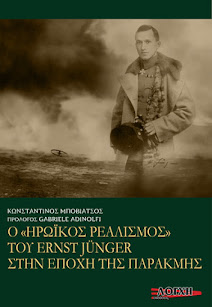
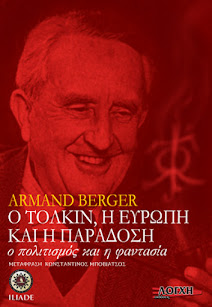





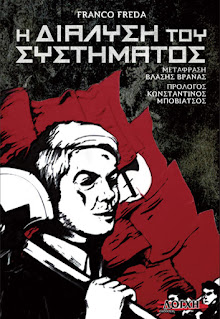
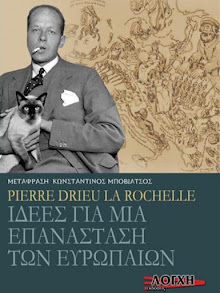


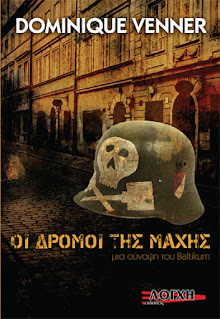



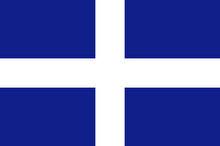



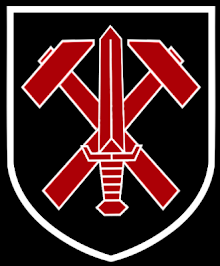


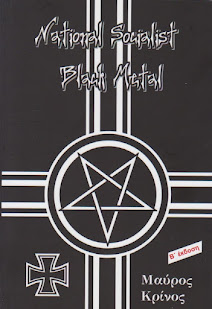



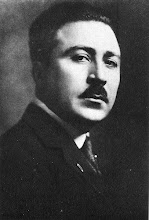
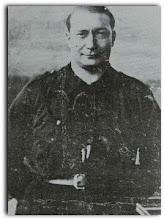
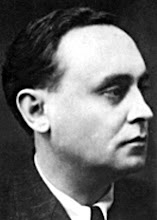
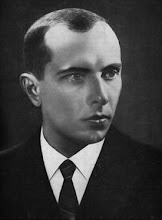
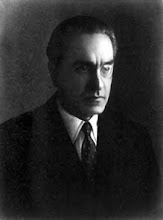




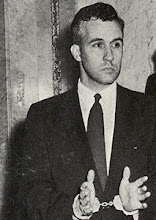

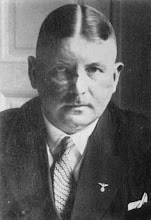





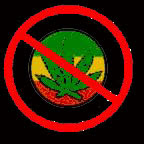



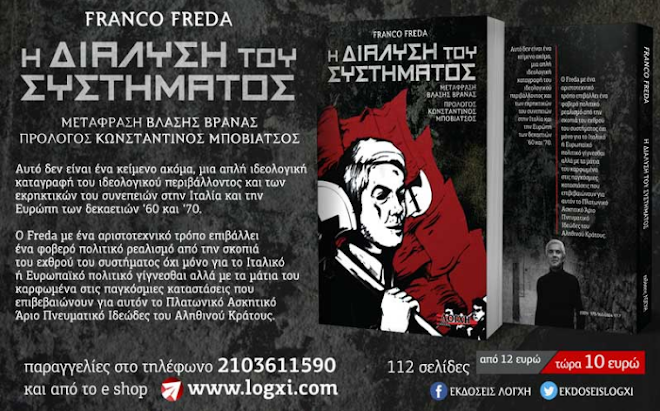












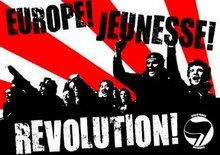




























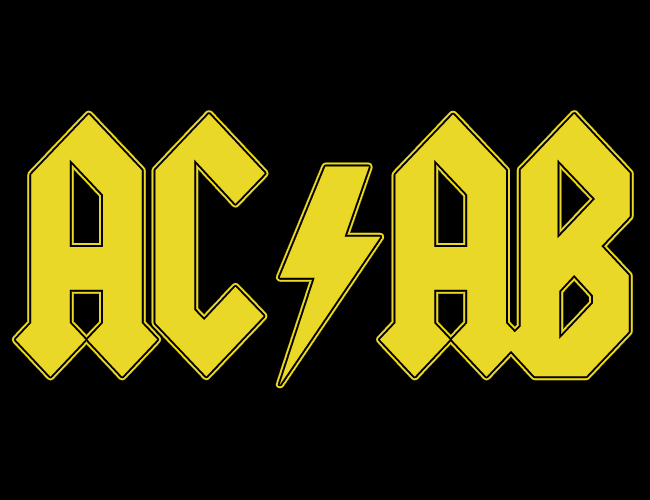-wzor.jpg)
